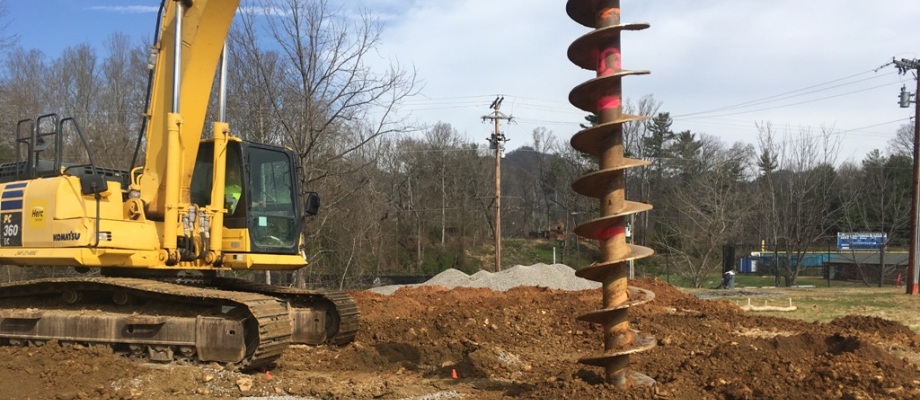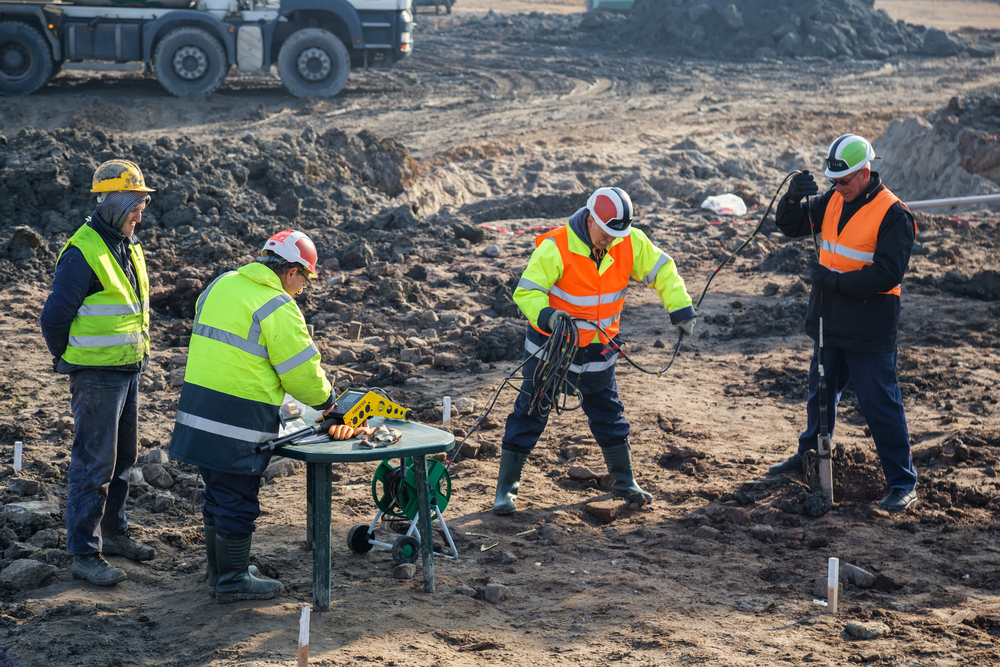Exploring the Cutting-edge Strategies and Technologies Shaping the Future of the Geotechnical Industry for Sustainable Design Solutions
The geotechnical market is going through a transformative shift, driven by ingenious techniques and technologies that emphasize lasting engineering solutions. Advanced soil stabilization techniques, the usage of clever products, and the application of data analytics are redefining just how we approach framework difficulties.
Advanced Soil Stabilization Techniques
Dirt stabilization is a crucial procedure in geotechnical engineering, focused on enhancing the physical properties of dirt to boost its load-bearing capacity and durability. Advanced soil stabilization techniques play a pivotal role in attending to obstacles related to weak or unsteady soils, thereby enabling secure and efficient construction methods.
Amongst the famous techniques, chemical stabilization involves making use of additives such as lime, cement, or fly ash, which respond with dirt bits to create a more cohesive mass. This method is particularly effective in enhancing the strength and moisture resistance of large clay soils. Mechanical stabilization, on the other hand, involves the physical alteration of dirt properties via compaction or the incorporation of granular materials, causing enhanced thickness and security.
An additional ingenious technique is making use of geosynthetics, which provide support and reduce dirt disintegration while boosting drainage. Methods like dirt mixing and deep soil stablizing are likewise acquiring grip, permitting in-situ therapy of troublesome soils. Collectively, these innovative techniques not only improve the performance of soil structures but additionally add to lasting engineering techniques by minimizing the demand for comprehensive excavation and product transportation.
Smart Products in Geotechnics
Advancement is at the forefront of geotechnical design, especially with the incorporation of smart products that enhance the efficiency and functionality of soil structures. Smart products, such as form memory alloys, piezoelectric products, and self-healing polymers, are changing the way engineers approach dirt stabilization and framework durability (consulting engineer). These materials can adapt to transforming environmental problems, reply to tension, and even fix themselves, substantially improving the resilience of geotechnical systems
For instance, piezoelectric products can generate electric charges in feedback to mechanical stress and anxiety, offering possible for real-time monitoring of dirt problems and structural integrity. Self-healing materials can autonomously fix problems and fractures, reducing upkeep prices and expanding the lifespan of geotechnical properties. The combination of these smart materials not just boosts the mechanical residential properties of soil however additionally adds to sustainable design methods by decreasing resource intake and ecological impact.
As the geotechnical industry remains to advance, the adoption of smart materials will certainly play an important function in establishing cutting-edge services, guaranteeing that facilities are not only durable but also versatile to future challenges. This transformative method is poised to redefine the standards of security and efficiency in geotechnical engineering.
Information Analytics for Infrastructure
The integration of clever materials in geotechnical engineering has paved the means for advanced approaches, specifically in the realm of data analytics for infrastructure. This innovative method leverages considerable information collection and analytical methods to boost decision-making procedures throughout the infrastructure lifecycle. By utilizing sensors installed in wise materials, engineers can continually monitor important specifications such as dirt security, wetness levels, and architectural honesty.
Information analytics makes it possible for the change of raw data into actionable insights, enabling for predictive upkeep and enhanced danger administration. Advanced formulas and machine understanding strategies help with the identification of anomalies and patterns, which can educate timely treatments and optimize resource allotment. Additionally, incorporating geographical details systems (GIS) boosts spatial evaluation, further improving the decision-making structure.
As framework projects expand in intricacy, the dependence on data analytics becomes progressively necessary. It promotes an aggressive strategy, decreasing the possibility of failures and guaranteeing the long life and sustainability of structures. By utilizing the power of data analytics, the geotechnical sector is positioned to not only boost present methods however additionally leader innovative solutions for future infrastructure difficulties. This harmony of innovation and design principles will specify the future of sustainable facilities development.

Lasting Ground Renovation Techniques
Different lasting ground renovation techniques are becoming crucial remedies to deal with the obstacles of geotechnical engineering while decreasing environmental impact. These techniques not only boost dirt performance yet likewise promote eco-friendly stewardship by minimizing dependence on standard, more invasive techniques.

Another cutting-edge method is the application of geosynthetics, which consists of naturally degradable materials that strengthen soil while promoting water drainage and disintegration control - consulting engineer. This decreases the requirement for hefty machinery and minimizes website disturbance, hence maintaining local environments
Additionally, methods such as dynamic compaction and vibro-replacement have actually evolved to include sustainable methods, reducing and incorporating recycled materials carbon impacts. These methods exhibit the market's change in the direction of more ecologically accountable remedies, guaranteeing that ground renovation not just fulfills engineering requirements however likewise adds favorably to the surrounding environment.
Technologies in Ecological Surveillance
In recent times, advancements in environmental tracking have dramatically enhanced the ability to evaluate and handle geotechnical jobs with very little environmental interruption. Cutting-edge technologies, such as remote noticing, Web of check this site out Things (IoT) gadgets, and real-time data analytics, are transforming exactly how ecological effects are gauged and minimized.
Remote picking up modern technologies, consisting of satellite images and airborne LiDAR, facilitate the fast analysis of land usage modifications and environmental problems - geo tech engineer. These tools enable continual tracking of websites, allowing engineers to recognize potential problems before they rise. In addition, IoT tools, geared up with sensors for criteria like dirt temperature, gas, and moisture emissions, supply online information streams that boost the understanding of site-specific environmental variables
Real-time information analytics additionally refine decision-making processes by integrating data from various resources, allowing for aggressive administration strategies. This alternative approach not only ensures compliance with ecological policies however likewise advertises sustainable practices within the geotechnical market.
As these developments remain to advance, they hold the prospective to bridge the space in between engineering objectives and ecological stewardship, fostering a much more lasting future for geotechnical projects worldwide.
Final Thought
Advanced dirt stablizing approaches, the integration of wise materials, and the application of data analytics jointly enhance the durability and efficiency of framework. These improvements not only address modern design challenges yet also pave the way for an extra lasting future in geotechnical practices.
Strategies like dirt blending and deep soil stablizing are additionally gaining grip, permitting for in-situ treatment of problematic dirts. Collectively, these innovative techniques not just improve the efficiency of soil frameworks yet also add to sustainable engineering link methods by lessening the need for extensive excavation and material transportation.

Comments on “Geo Tech Engineer: Enhancing Site Assessments with Advanced Geotechnical Techniques”